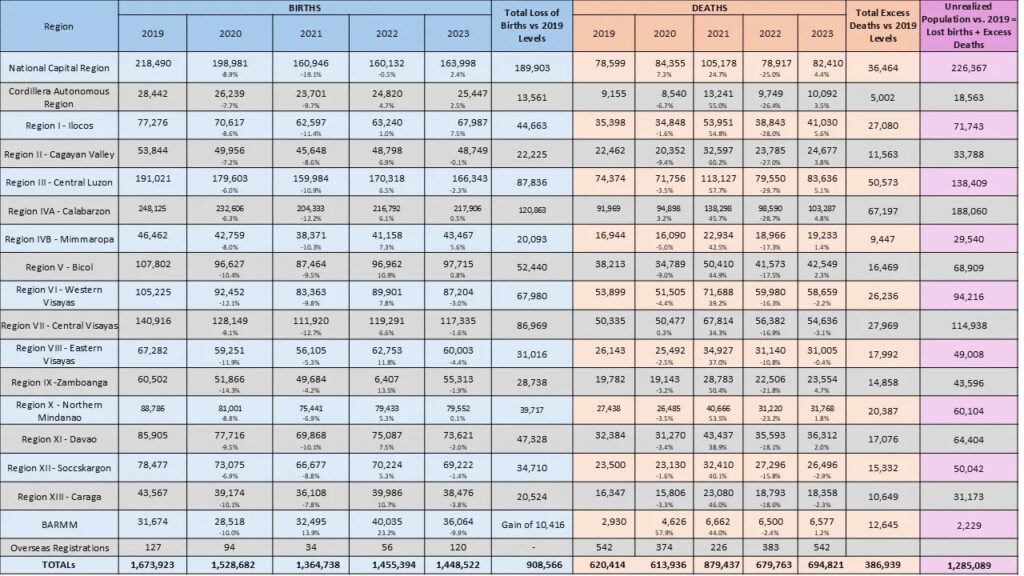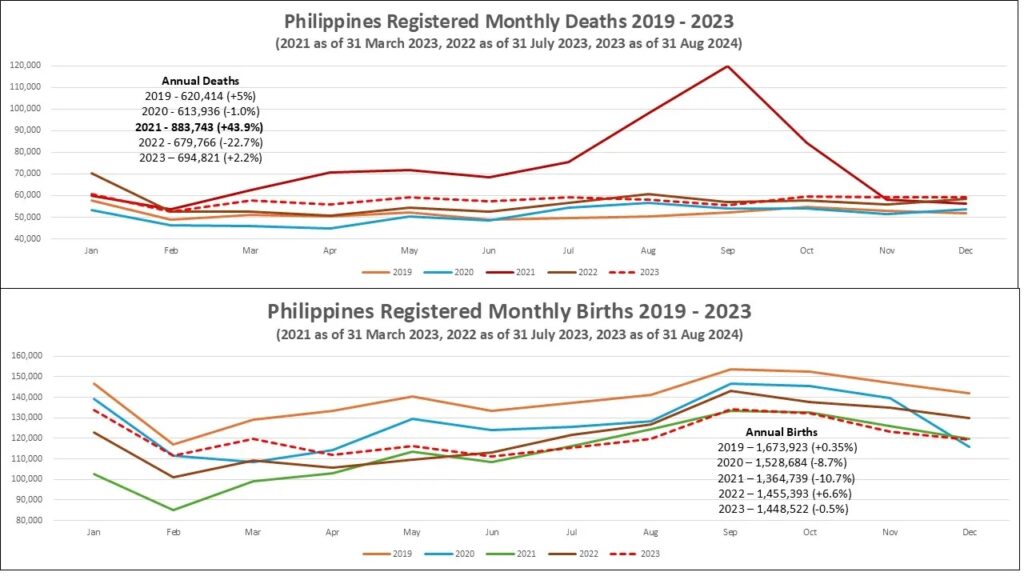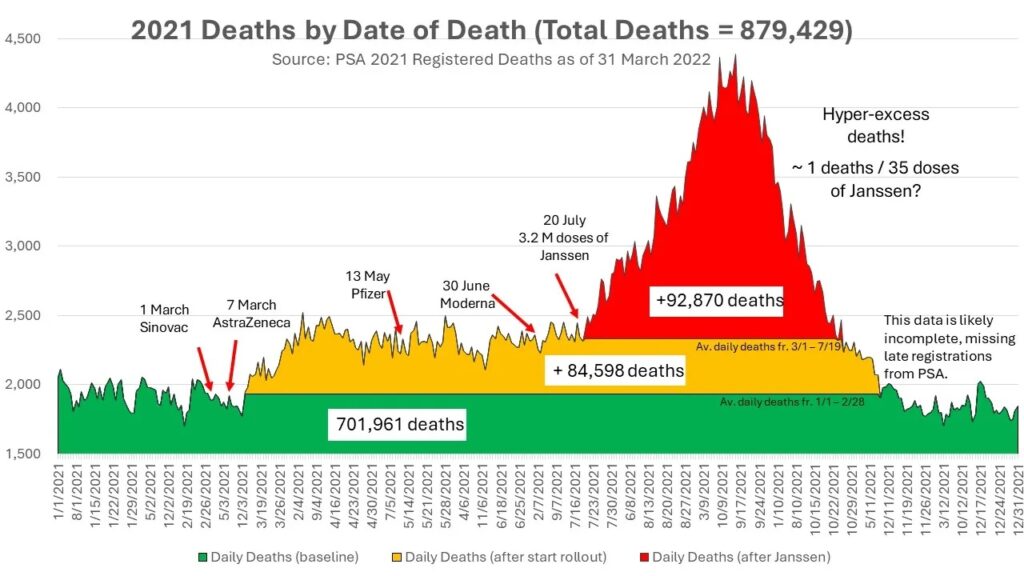
The Philippines is forecast to suffer “population collapse” as sudden and unexpected deaths continue rising while birth rates have plummeted to historic lows.
According to experts who have analyzed the latest birth and death rates in the country, Filipinos are dying off in unprecedented numbers.
Super Sally’s Newsletter reports: I set out here the visualization showing monthly and annual registered deaths and births by region for the interest of my readers, and particularly Filipinos who may be interested in how their personal home regions fared. I show mortality and births since 2019, the last typical year.

BYPASS THE CENSORS
Sign up to get unfiltered news delivered straight to your inbox.
Latest Video
New readers may be shocked at the excess mortality in 2021, which started only in March of that year, but which raised total excess deaths (above 2020 levels) as high as 60.2% (in Cagayan). There was no word from government about these excess deaths at the time, and has not been since.
I believe that the 2021 mortality and birth data was throttled in early 2022, and the devastation of 2021 will likely be hidden forever. Typically vital statistics data is collated and reported up until the end of the following year. For 2021, all collation of vital statistics later than March 2022 was not released; we have no idea what the actual figures should have been, only that there were likely far more deaths than were actually reported.
The following (tiny) table summarizes births and deaths by region from 2019 to 2023. If 2019 is taken as the last normal and reference year, there have been 908,566 fewer births from 2020 through to 2023. There have been 386,939 more than expected deaths. This gives an “unrealized population” of 1.285 million; people who likely should have been living and contributing to the population, but are not.

Governors of each region should find this data disturbing. Loss of population = loss of loss of market demands, loss of productivity, loss of financial potential, and finally great premature sorrow for the population!
Overall birth and death data is set out. Overall 2023 deaths are slightly higher than 2022 levels. 2023 births are just slightly lower than 2022 levels. Both may rise slightly still in the final reports that will be issued early in 2025.

Now by region. Pay attention to the deaths which are higher than 2022 levels for many months, with even some data points higher than 2021, which was the prior worst year. Please pay to the birth data; early in 2023 births were higher than 2022 and 2021 levels. However, by end of year births had dropped, across almost all regions to levels similar to 2021. 2021 missing births may be due to missed registrations of actual live births. However, end of 2023 births are likely really trending lower than prior years, raising grave concerns with regards to population fertility, and the impacts of the vaccines that were given to some 78 million Filipinos, focusing on students and young working people.

The big spike in deaths which happened in every single region in July of 2021 was concurrent with the rollout of Janssen C19 injectables which were delivered to all regions with 3.2 million doses administered within just a few weeks. There was a second death spike in January 2022, also matching the second Philippine delivery of 5.2 million new doses of Janssen. All Janssen doses were delivered under the COVAX (WHO) program. This is not to say other injectables were not deadly and causative of excess deaths, just that Janssen drove those excess deaths to a new devastating high!

Deaths and births in National Capitol Region which includes Manila, should be complete, are both running higher than 2022 levels. Note the excess deaths in 2020 and 2021. Most regions, other than the most heavily industrialized / developed where people could access (deadly) hospital protocols, did not have excess deaths in 2020.
End of year data for Region VI may still be incomplete, particularly for December. It seems many regions lag in sending their data to the central PSA office.
Birth and death data for Davao, Soccskargen, Caraga and BARMM regions for end of 2023, still appears incomplete. This may or may not be updated by early 2025 when the final report for 2023 is issued.
Source link

